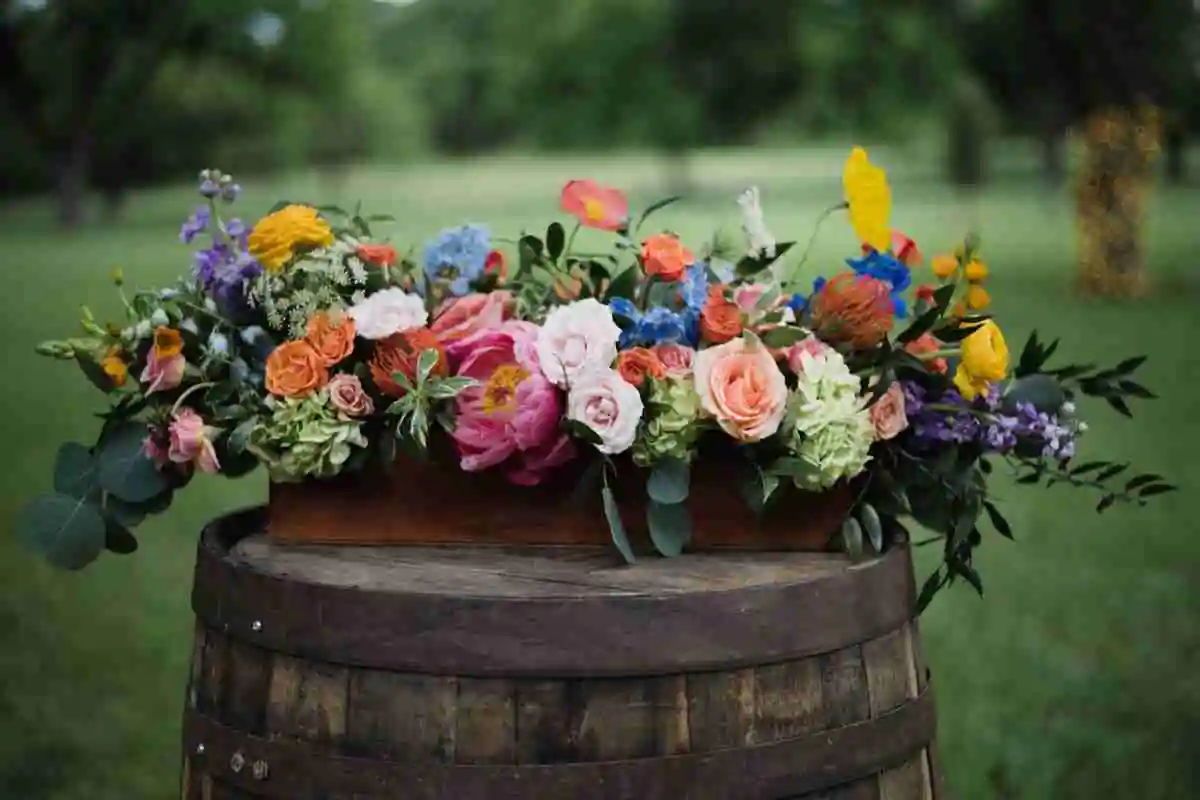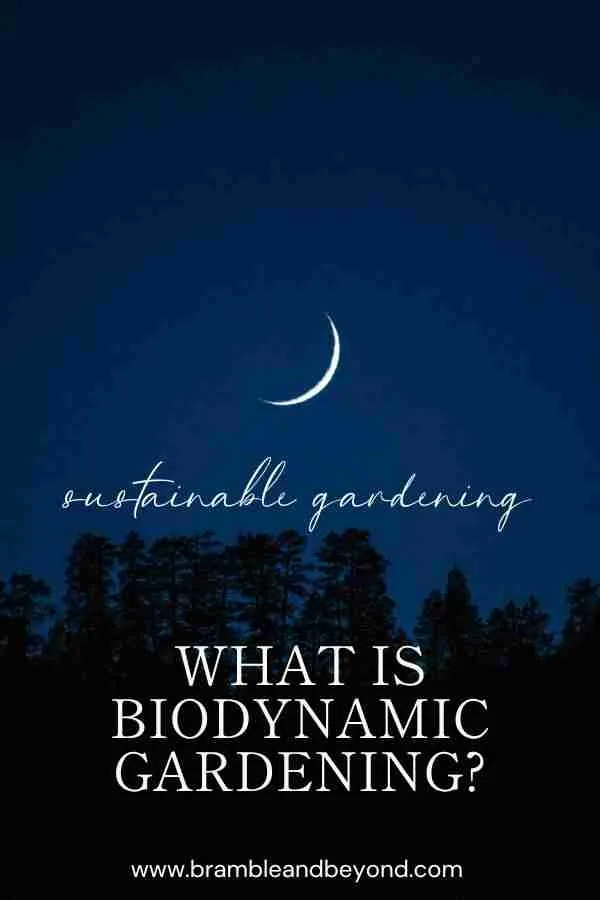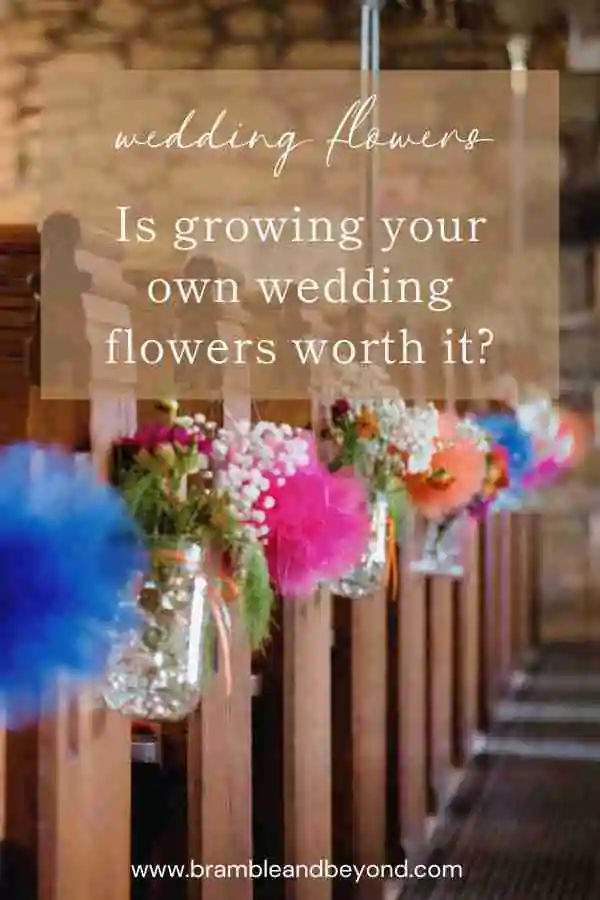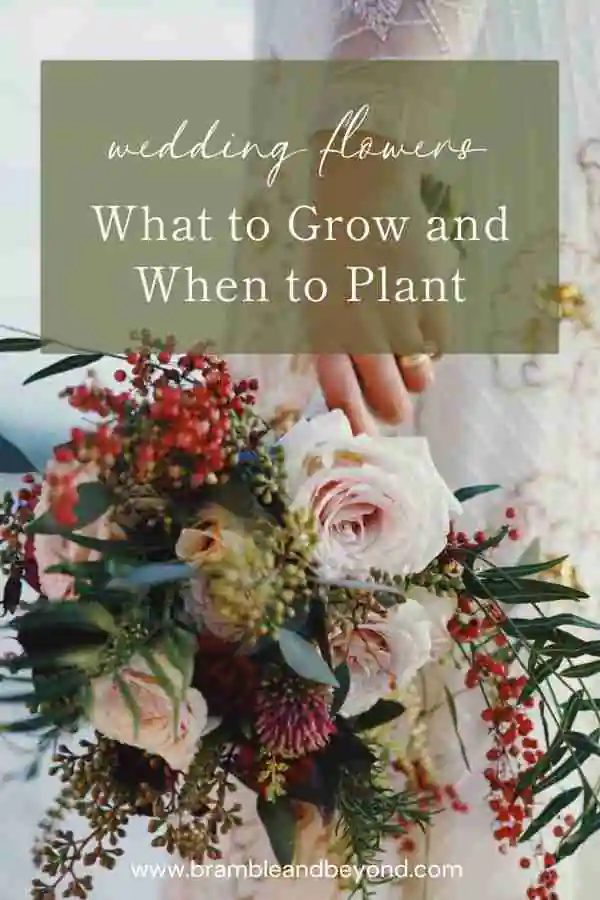Disclosure: This post may contain affiliate links, meaning I get commission if you decide to make a purchase through my links, at no cost to you. Please read my Affiliate Disclosure for more information.
Tying the knot? Congratulations! You’ll definitely want the perfect flowers to match your special day. Growing your own flowers for your wedding can be a cost-effective and fulfilling way to bring your dream look to life. However, it does come with its fair share of challenges. Don’t worry, though! Take a look at this post to discover more about the benefits and challenges of growing flowers for your wedding.
Whenever I browse through a seed catalogue, my biggest struggle is stopping myself from buying everything. There are just so many things I want to try in various beautiful colours. When it comes to growing flowers for your wedding, it’s important to be more focused than me. Make sure to choose flowers that will be in bloom on your wedding day and that match your colour theme, rather than simply going for whatever catches your eye.
In addition to this tip, here are 9 more essential tips to assist you in growing your wedding flowers with the least stress and hassle. With these tips in mind, you’ll be well on your way to having a beautiful and stress-free wedding with flowers straight from your own garden!
1. Choose the right flowers
When it comes to selecting flowers for your wedding, it’s important to consider the season and what will be blooming at that time. So first, do some research on the flowers that will be in season. Then, create a mood board with the flowers, colours, shapes, and styles that you would like to include in your wedding decor.
Once you know the look you want to achieve, try to limit yourself to growing no more than ten different varieties of flowers. Also, remember that you can add foraged perennials, foliage, and wildflowers to complement your choices.
Using the same flowers or colours throughout your entire decor will help you achieve a beautiful, effortlessly coordinated look, regardless of your floristry skills – and it makes the growing so much easier.
Additionally, don’t forget to explore the plants already growing in gardens that you have access to. Find out if any of them will be in bloom around your wedding day, fit your colour scheme, and if the owner is willing to let you cut them. Asking your friends and family for assistance in growing flowers or for flowers they may already have in their gardens can be a great help. Sharing 20 stems of shrubs for foliage across five different gardens will go unnoticed, while taking 100 stems from one garden may pose more of a challenge.
This will save you time and effort and provide you with more options to choose from!
2. Understand how many flowers you will need
Once you have decided on the flowers you’d like to use, it’s important to know how many flowers you will need. This will depend on the number of bouquets and guests you will have. Check out this post that can assist you in calculating the quantity of flowers needed for your wedding.
You will also need to consider the number of each type of flower you will need for each arrangement.
In general, an arrangement consists of 1/3 focal flowers, 1/3 filler flowers, and 1/3 foliage. For example, a pedestal arrangement for the end of May/early June could include:
- Focal flowers: 10 roses/peonies/ranunculus, 10 alliums, 5 lupins.
- Filler flowers: 10 aquilegia, 10 cornflowers, 5 ammi majus.
- Foliage: 5 tall branches of foliage, 10 euphorbias, 10 mint.
The above is a total of 75 flowering stems for just one arrangement. It’s surprising how many flowers are needed to create an arrangement. Try to see if you can count/estimate the number of flowers in. the arrangement below and you will see my point.
To keep track of everything, it’s a good idea to start a spreadsheet with the required quantities.

3. Have adequate space for growing your wedding flowers
Now that you have familiarised yourself with the flowers and quantities required for growing your wedding flowers, it’s important to ensure that you have enough space to accommodate growing the flowers. Depending on the type of flowers you choose, you may need to sow seeds, pot up plugs, or utilise existing perennials and shrubs.
If you have a new garden, it’s possible that your perennials and shrubs may not have grown enough to meet your needs. In this case, it would be beneficial to focus on annuals in separate beds. You can use the no-dig method to quickly create productive beds on your lawn. Once you have finished with them, you can return your lawn to its original state, if you so desire.
To give you an idea of space requirements, to produce 600 stems in one day, I recommend allocating an area of at least 15m2. This could be achieved through strips of 5x 3mx1m beds or any combination that suits your garden. You can calculate the amount of space you need for your wedding flowers here.
Ensure that you have sufficient space to grow all the flowers you require. If your garden lacks the necessary room, you may want to consider renting a plot of land, taking on an allotment or asking a friend or family member if they have space available.
If space is limited, purchasing some of your flowers in bulk from a local flower grower can be a cost-effective solution to obtaining the necessary quantity.
4. It’s never too early to start growing your own flowers for your wedding
Planning for growing your own flowers for your wedding is such an exciting task! Why not give yourself plenty of time to make it absolutely perfect? Once you’ve made your flower selection, it’s a great idea to plan ahead and get familiar with the life cycle of the plants.
Try to plan up to a year (or maybe even longer!) in advance of the big day. This will give you the opportunity to take advantage of biennials, bulbs, and autumn-sown hardy annuals. By doing so, you’ll have ample time to experiment and make any necessary adjustments along the way.
This is especially crucial if your wedding is in the spring or early summer. However, if you’re tying the knot in the autumn, you can sow the seeds in spring and most likely have a good supply of flowers by September, plus you have the added benefit of it being dahlia season!
5. Get the right supplies
Seed companies tend to have fresher seeds with better germination rates than those in garden centres. A good wholesaler can also give helpful advice on varieties, flowering times, and even mixtures that will look beautiful together. Even though I supply many flower seeds myself now, I started with seeds from Chiltern Seeds and Higgledy Gardens, they have a great selection.
You’ll also need the right supplies for your plants. Make sure you stock up on the necessary tools and equipment, such as pots, compost, trays, stakes, ties, and other sundries. You’ll be surprised how much you will need.
Additionally, you’ll need some containers for harvesting and carrying your flowers. A wheelbarrow and plenty of buckets will do the job, but make sure you have buckets that will support the weight of the flowers and won’t tip over.

6. Grow more than you need
It’s always a good idea to grow a bit more than what you actually need. This way, you’ll have some extra flowers as a backup in case anything unexpected happens. Adding about 10% extra should be enough, but feel free to grow even more if you can.
7. Succession sow
Succession sowing is a fantastic way to ensure a continuous supply of beautiful flowers for your big day.
Start sowing your flowers in batches to stagger the flowering times of your plants. This will extend the harvesting period, providing you with flowers to use over a longer period of time. Additionally, it serves as a backup plan in case your first batch of flowers blooms before or after your special day.
Succession sowing involves sowing flowers in batches, preferably every 2 weeks. To do this, determine the “ideal” sowing date based on your wedding date and the seed-to-bloom time (typically around 10-12 weeks for annuals). Then, make 3 sowings: one 2 weeks prior to the ideal date, one on the ideal date, and another one two weeks later. If you have enough space and time, you could even do a few more sowings for extra security.
Please note that this method is only applicable to annuals. When it comes to perennials, you’ll have to keep your fingers crossed that the plant is in bloom when you need it.
8. Use planters to great effect
Using planters is a wonderful way to create stunning displays that add an extra level of beauty and elegance to your special day. By strategically placing them around your venue, you can replace traditional floral arrangements. This means you’ll have less to worry about as the big day approaches.
You have the option to use clusters of planters or even a single line to create a show-stopping visual that will truly impress your guests.
A large tub filled with lush hostas or ferns is not only easy to grow but also adds impact without taking up much space in your garden. The best part is, you can continue to enjoy them long after the event, as they will only improve year after year.
When planning your wedding flowers, it’s important to choose planters that will complement the flowers you want to grow and create a special setting for your photos.
With the right planters, you can elevate your wedding to the next level!
9. Practice flower arranging
Once you have decided on the flowers you need, it’s time to begin honing your flower-arranging skills. This step is crucial in creating arrangements that have a professional and aesthetically pleasing look.
If you are unsure where to begin, consider visiting a florist or enrolling in a flower arranging course. You can also find numerous online tutorials that offer helpful tips and techniques.
Remember, flower arranging is a skill that improves with time and practice. With dedication and effort, you can become an expert in creating stunning and one-of-a-kind floral displays.
Enjoy the process
Above all, enjoy the process of growing your own flowers for your wedding. It’s a unique opportunity to add a personal touch to your special day while embracing sustainable and seasonal flower gardening.
Take the time to appreciate the beauty and fragrance of each bloom, knowing that they were nurtured with your love and care. Your wedding day will be a truly magical experience, filled with the beauty of nature and the joy of seeing your own flowers come to life. So, embrace the journey and let your love and creativity bloom!







